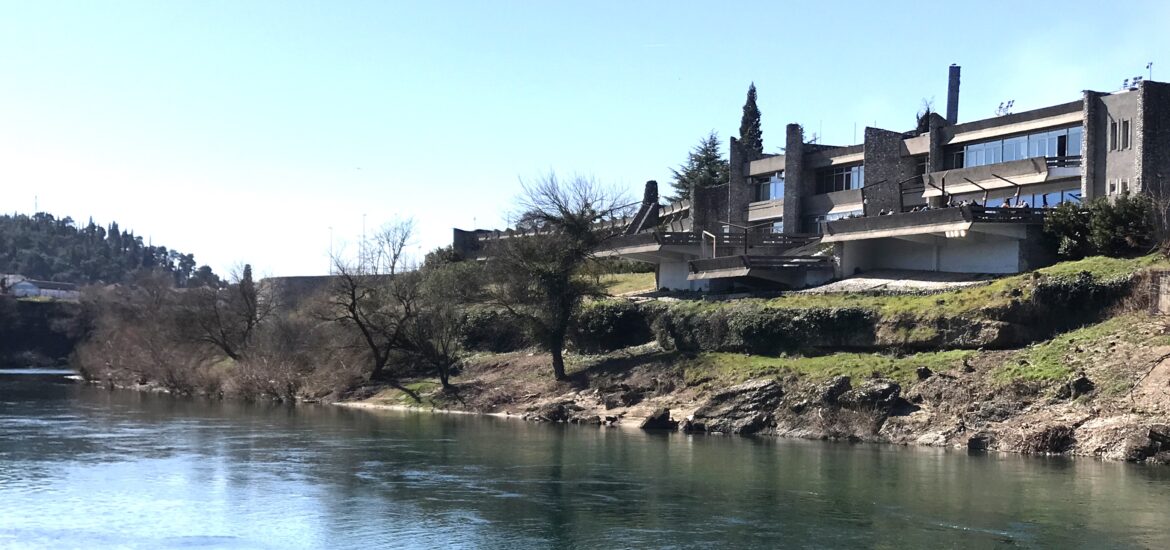It is true, Podgorica doesn’t have the best reputation as a city destination in Europe. And a lot of blogs about the best things to do in Podgorica mostly describe day trips or activities out of the city.
But Podgorica is an interesting city to explore. Even if you have just a few hours to spend, it is certainly worth a walk around to taste and take in what is a unique combination of a Mediterranean and Eastern European capital city.
As much of the city was destroyed during the allied bombings in World War II, the post-war reconstruction was carried out in the typical style of the socialist ‘Tito’ era that followed. Most buildings were strikingly dull, grey, concrete, and square.

However, many things have changed in Podgorica during the last few decades. Older apartment blocks have been repainted in fresh colors. New neighborhoods with modern architecture have appeared. The streets and boulevards are wide and the spacious sidewalks/bicycle paths are shadowed by big trees. The rivers are emerald green and the vast parks are perfect for taking a stroll. There are also lots of benches around, which are often used by the elderly or by mothers with children.
Moreover, if you are interested in Brutalist architecture or Social Modernism, characteristic for the period between the mid-1960s and the late-1980s, you can find astonishing edifices in the city: for instance, the building of the catholic Church of the Holy Heart of Jesus, Hotel Podgorica, the residential complex ‘Blok 5’, the Technical Faculty building and many others.
Let’s take a look at the most important architectural examples:
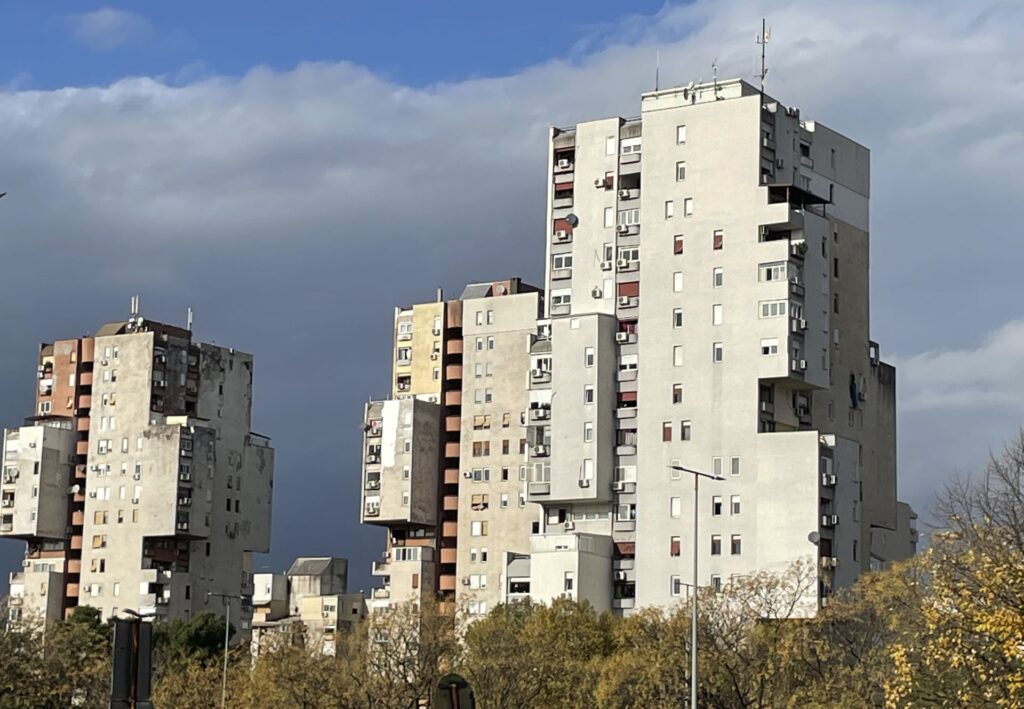
‘Blok Pet’ Residential Complex:
In the western part of Podgorica is a large residential complex that is known as ‘Blok Pet’ (Block 5), a fascinating example of Yugoslav-era architecture. The complex was constructed from 1977 to 1984 on the basis of the town-planning project of Vukota Tupa Vukotić and the architectural solution of Mileta Bojović. The most prominent part of this block is a group of five residential towers up to 16 floors high with characteristic protruding rectangular bump-outs. In addition to these high-rise buildings, the complex contains eight long strings of lower apartment blocks. The complex disposes of wide streets and avenues, pedestrian zones, playgrounds, supermarkets, sports grounds and a lot of greenery.
Today, Blok 5 is still greatly populated and stands as a significant symbol for the city of Podgorica, but many elements of it are in a poor condition, especially the common areas and courtyards. However, the inhabitants are obviously trying to maintain their living space. Many buildings have been repainted lately and the green lawns are – at most places – well-kept.
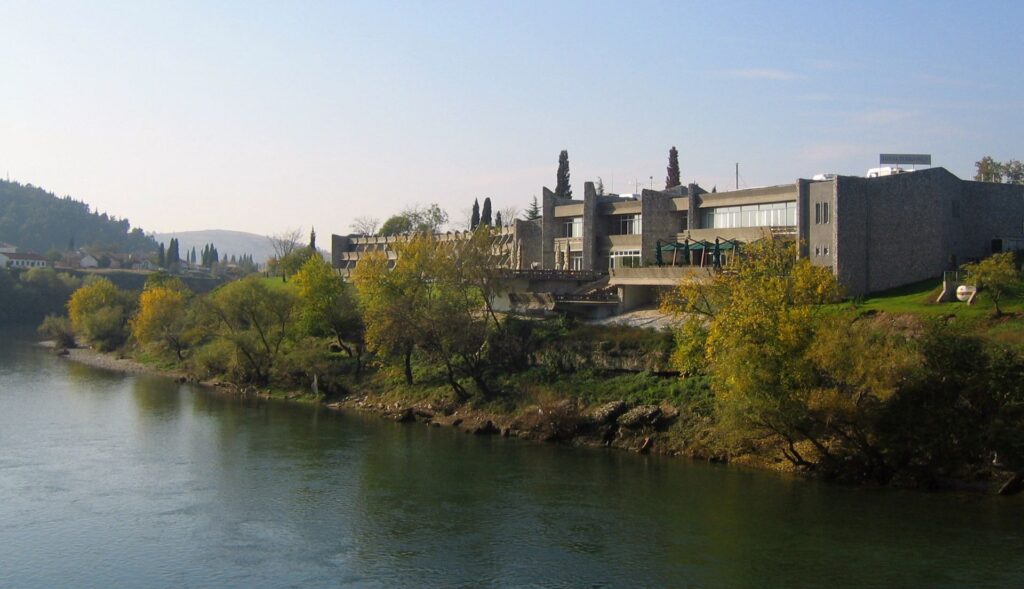
Hotel Podgorica:
The most architecturally important hotel in Podgorica created during the Tito era was ‘Hotel Podgorica’. Situated on the river bank, this hotel complex was unveiled in 1967 and created by Svetlana Kana Radević. the first female architect in Montenegro. Its facade is adorned with river-rock taken directly from the Morača River. The hotel’s interior was refurbished after its privatization in 2004 and the hotel continues to be operational.
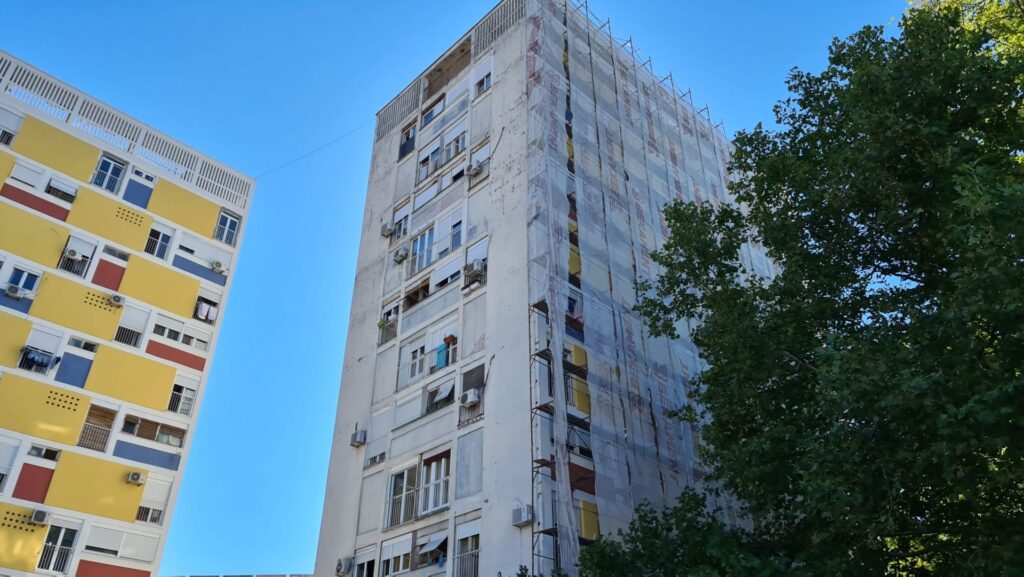
‘The Canaries’ Apartment Towers:
In the center of Podgorica is a pair of apartment blocks that stand as the first high-rise buildings ever constructed in Montenegro. Unveiled in 1964, these twelve-level towers stand out with their playful array of bright yellow panels, with accents of orange and dark blue. Due to these panels, the towers got their nickname:’Kanarinke’. ‘The Canaries’ were so popular that they were used as promotional attractions on the city’s postcards. The panels were painted in more subdued colors by the late 1970s (photo: Atlas Obscura). However, in 2019, the Kanarinke towers were finally repainted with their original color scheme, to the delight of Podgorica’s inhabitants.
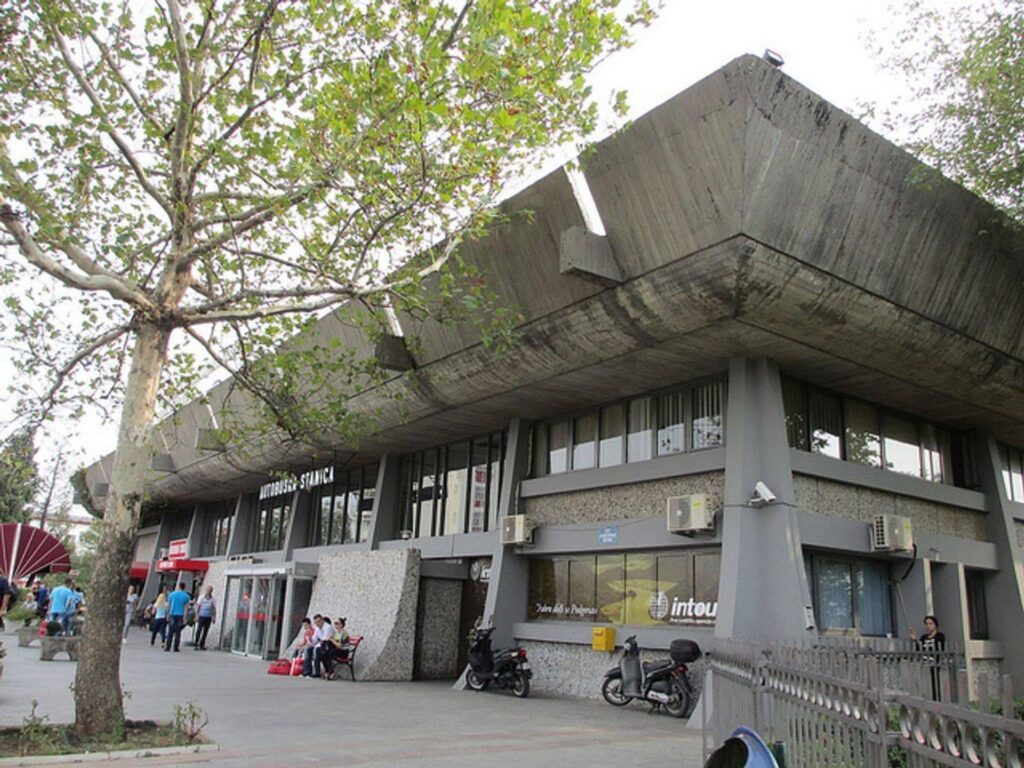
Podgorica Bus Terminal:
Not far from the center of Podgorica, right next to the train station, is the city’s central Bus Terminal. Built in 1968 by Svetlana Kana Radević, the design of this concrete and glass structure mirrors Hotel Podgorica, as it is also made of raw concrete and river stones.
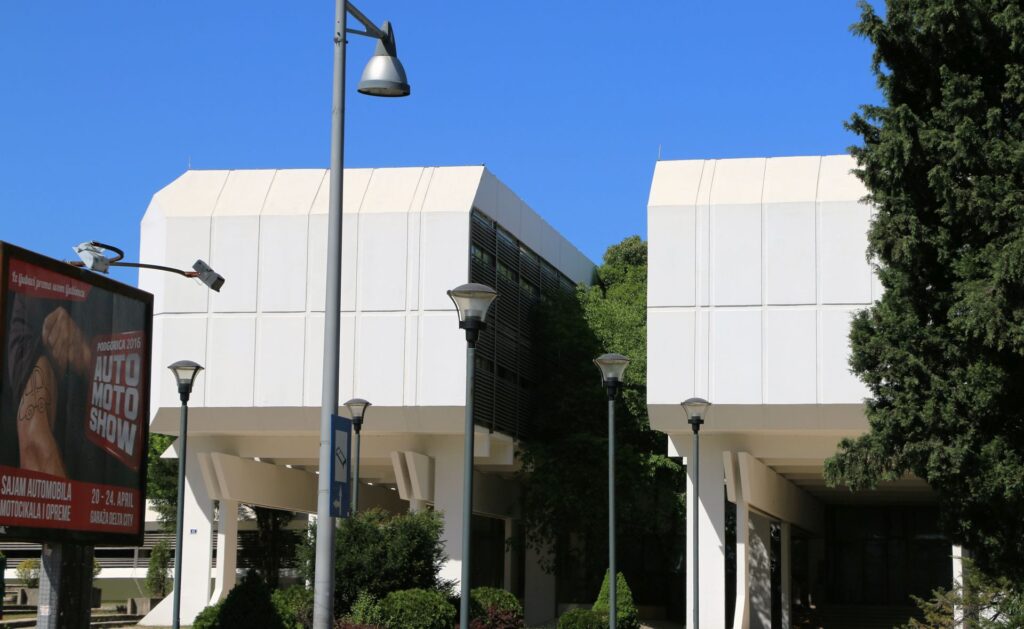
Central Committee Building:
The building of the Central Committee of the Communist Party of Montenegro was constructed in 1979 (it still houses a few governmental offices). The central elements of this building are two 100m long angular office corridors which are both closely parallel and elevated several meters above the ground on concrete pylons. Would you be surprised if I say that the building’s nickname is ‘The Two Coffins’?
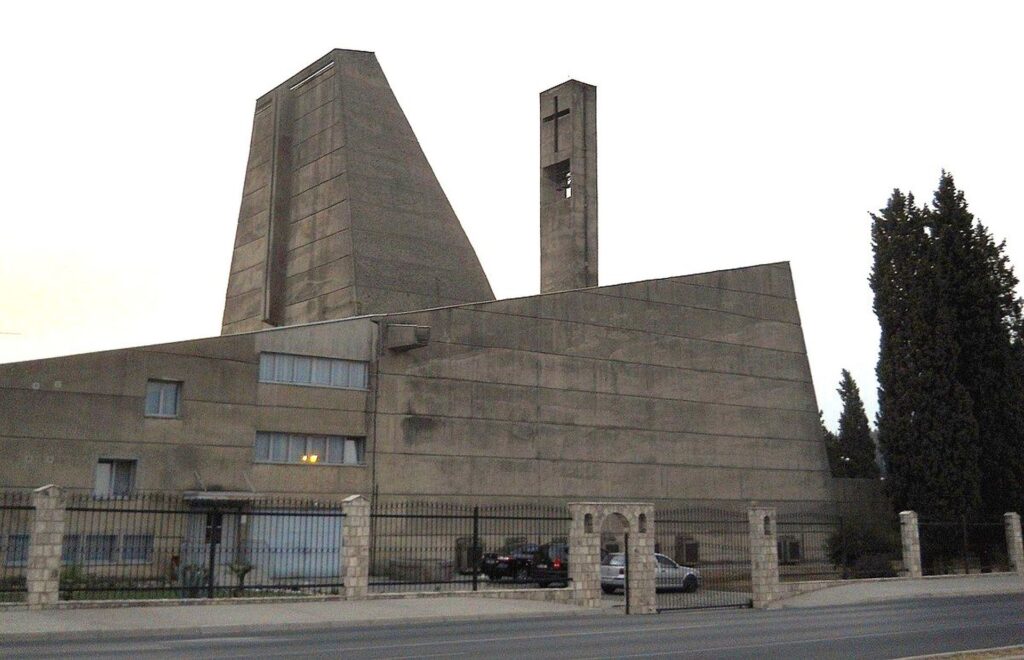
Church of the Holy Heart of Jesus
The imposing concrete building of the Catholic Church of the Holy Heart of Jesus was built in 1969 and is still the only Catholic church in the city. It is a fine example of Brutalist architecture, which was still very much in fashion at the time. Yes, it might look a little bit like a bunker at first sight, but it is an interesting monument. Even though the place is situated right by a busy main road, it feels like a modern oasis of peace (photo: Reddit).
Other typical examples of Brutalist architecture are:
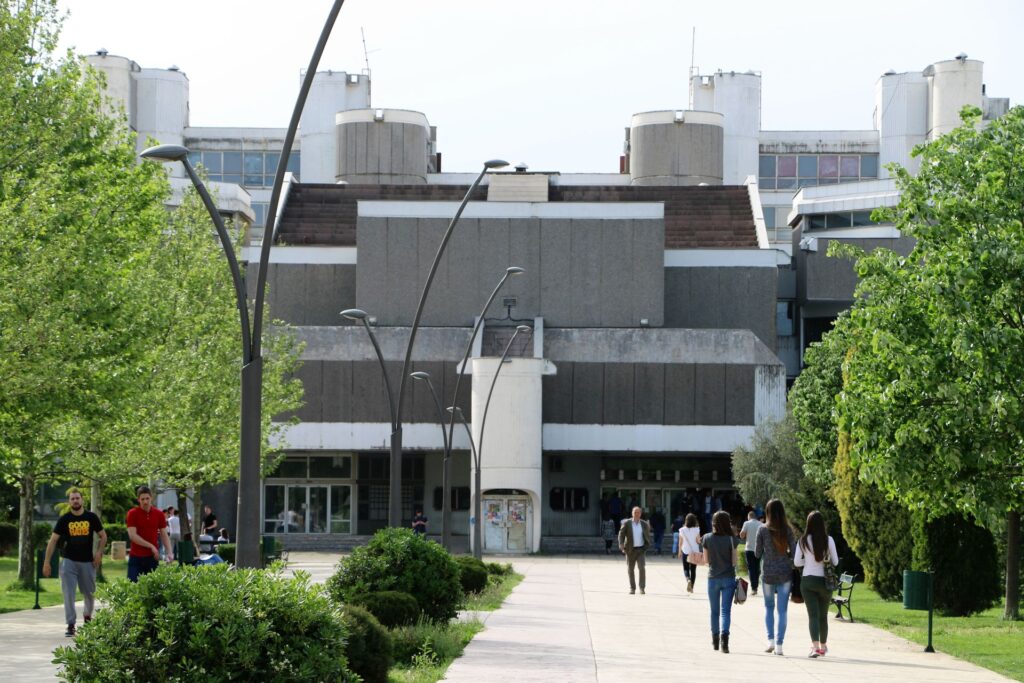
Technical Faculty Building:
The Technical Faculty Building of the University of Montenegro was created in 1976 by the architect team of Milan & Pavle Popović and is characterized by its eclectic assemblage of rising cylinders, cantilevered masses and upwards stair step ascending bodies, all leading up to an 8-level tall horizontal slab tower.
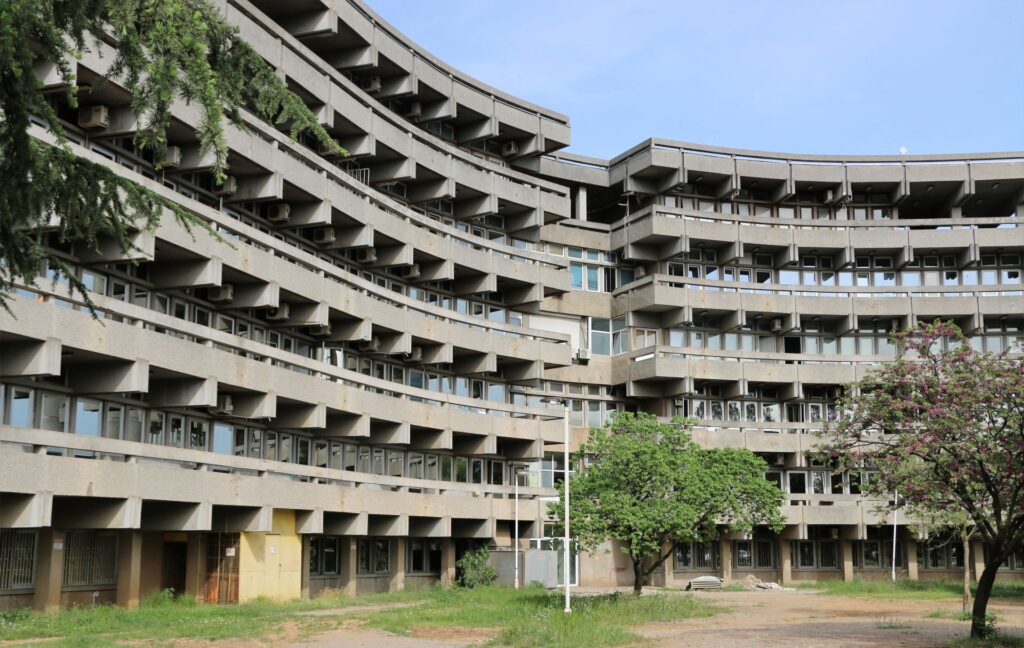
Clinical Center of Montenegro:
The Clinical Center of Montenegro, with its curved concrete facades, was unveiled in 1974.
After having seen the photos, you will probably wonder why this type of Brutalist architecture would be so interesting. Some people believe that these buildings lack attractiveness, as they are cold and austere, dull and grey (the term Brutalism is derived from the French term ‘beton brut’ or ‘rough concrete’). Moreover, they often show signs of water damage and decay.
As a matter of fact, the popularity of the Brutalist style that reached its peak in the mid-1970s has now crashed down as a model of bad taste. But over the past 5 years, a new appreciation for Brutalism has emerged. Books were published, exhibitions were organized and the hashtag #brutalism has got over 500,000 images on Instagram.
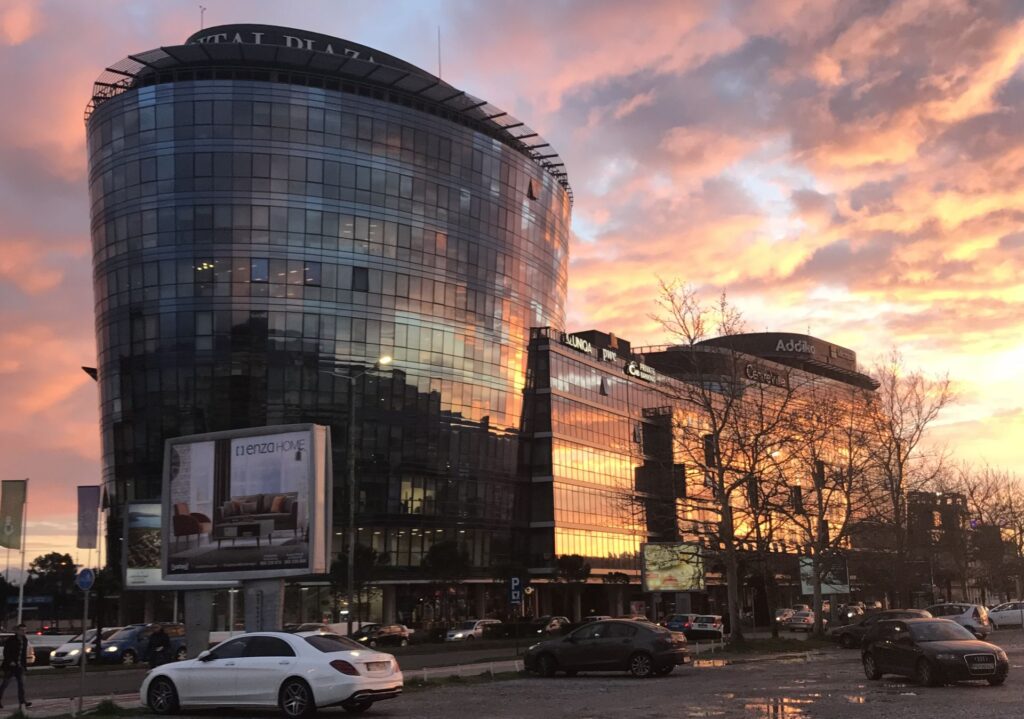
With this blog post I am trying to draw your attention to some aspects of Podgorica that are often neglected and misunderstood. Well, they say that trends are circular and what is old becomes new again. Will Brutalism become fashionable once more? Or do you prefer the modern glass buildings that have been constructed during the last few decades? What do you think?
